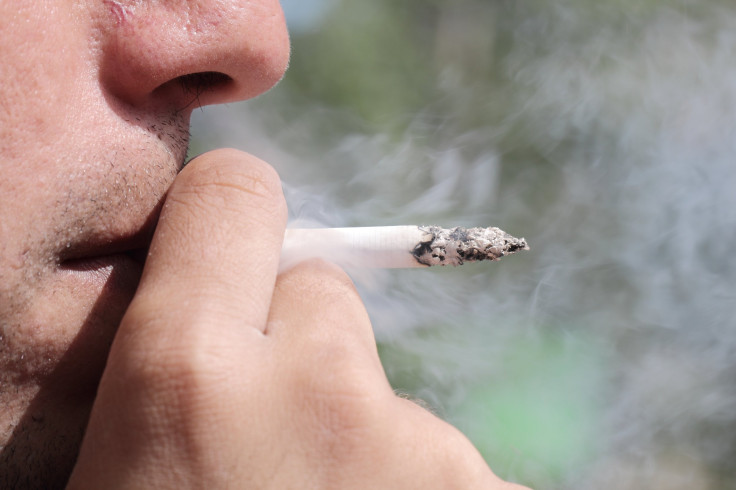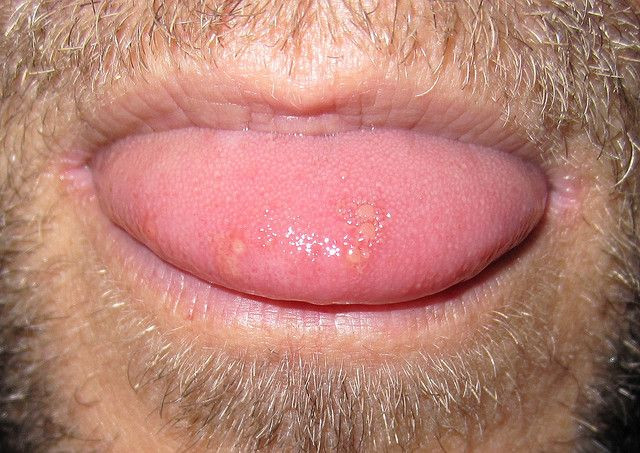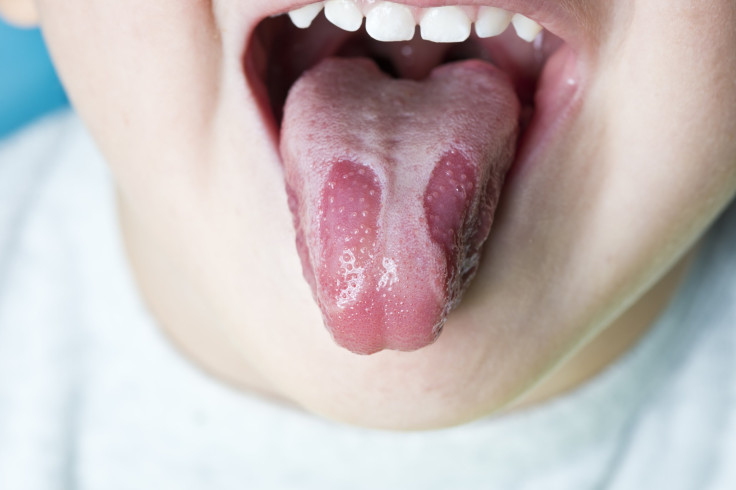Tongue Tied? What Your Tongue's Appearance Can Tell You About Your Health

"Stick out your tongue and say 'ahhh'" has become inarguably connected with a visit to the doctor's office, but have you ever wondered what they are looking for while peering deep inside your mouth? Just one glance your tongue can tell your doctor plenty of what's going on in your body, but for the rest of us non-doctors whatever our tongues are trying to say about our health is a mystery. Lucky for you, we here at Medical Daily compiled a quick list of some of the most common tongue characteristics and what they may or may not mean.
A Dark Tongue
Our tongues naturally have a pleasant, pink coloring. When your tongue begins to darken in color, this is indicative of bodily changes. The ancient Chinese had tongue diagnosis down to an art, believing that each tongue coloring coincided with an internal ailment. Even in modern medicine, doctors continue to regard tongue colorings as an initial sign of certain health conditions.
A dark tongue may be caused by something as simple and harmless as taking a new medicine or the addition of a new food into your diet. A black, hairy tongue (yes, this is a real medical term) is a temporary harmless condition that causes your tongue to look, well, black and hairy. It's caused by a buildup of dead cells on the surface of your tongue. Other than bad breath and a strange taste in your mouth, "black, hairy tongue" isn’t a serious health condition and usually clears up on its own. Poor oral hygiene, medication, such as Pepto-bismal, and tabacco use are all known to cause black, hairy tongue.
Brown spots on your tongue may look less frightening than black hairy toungue, but they’re not. Unlike black hairy tongue, brown spots could be a sign of something much more serious, such as melanoma. Early detection and treatment is extremely important, especially since this form of cancer commonly spreads to other parts of the body. At the first sign of a darker patch on your tongue, seek medical advice.

Pale Tongue
On the opposite end of the spectrum, having a lighter than usual tongue is also just as dangerous as having a dark tongue. A white tongue is most commonly caused by bacteria that becomes stuck in your tongue’s hair. Smoking, dehydration, or breathing out of one's mouth for a significant period of time can cause your tongue to look whitish in coloring. Although rare, a pale, smooth tongue can be indicative of anemia, a form of vitamin deficiency. Anemia may also cause the tongue to become inflamed, sore, and take on a swollen appearance, according to Livestrong.
Spots
Something as simple as burning your tongue on a cup of hot tea can cause spots to appear. Minor tongue burns, like burns on other parts of the body, will go away on their own.
A large majority of people will develop mouth ulcers, also known as canker sores, on their tongues at some point in their lives These sores may also appear throughout the inside of the lips and cheek. The sores are often round or oval and have a white or yellow center with a red border, according to the Mayo Clinic. The exact cause of canker sores is not fully understood, but they are known to occur during times of stress or following oral trauma such as surgery. Canker sores are also associated with certain conditions such as celiac disease and Crohn’s disease.

Leukoplakia are thick raised lesions that appear on the tongue. They can appear white or gray in color and are caused by minor irritation to the mucous membrane. Dentures and tobacco use are common causes for the sores, but people with weakened immune systems are especially prone to developing leukoplakia. The sores are usually harmless, but sometimes they may show early signs of cancer. For this reason, Mayo Clinic advises that it’s best to see a dentist whenever you notice the growth of leukoplakia.
Patchy
Oral thrush, or a yeast infection of the tongue, can cause the tongue to take on a white, patchy-like appeareance. It is caused by an infection of the fungus Candida albicans. Although most common in infants, the condition can occur in people of all ages. When on the tongue, thrush is not considered serious and is usally easily treated. If the infection spreads to other parts of the body, such as the esophagus or stomach, it may become more severe.
Geographic tongue earns its name from the map-like appearance it causes to the tongue to develop. Patches of an individual’s papillae (the tongue’s hair), go missing and create smooth red “islands” on the tongue with slightly raised borders. These “islands” will often heal and then reappear on a different part of the tongue. The condition can cause slight discomfort but is otherwise harmless. Currently, there is no known cause for geographic tongue, although doctors suspect it's related to the chronic skin condition, psoriasis. Some people also have a family history of geogrpahic tongue, so it is believed there is a genetic factor to the condition.




























